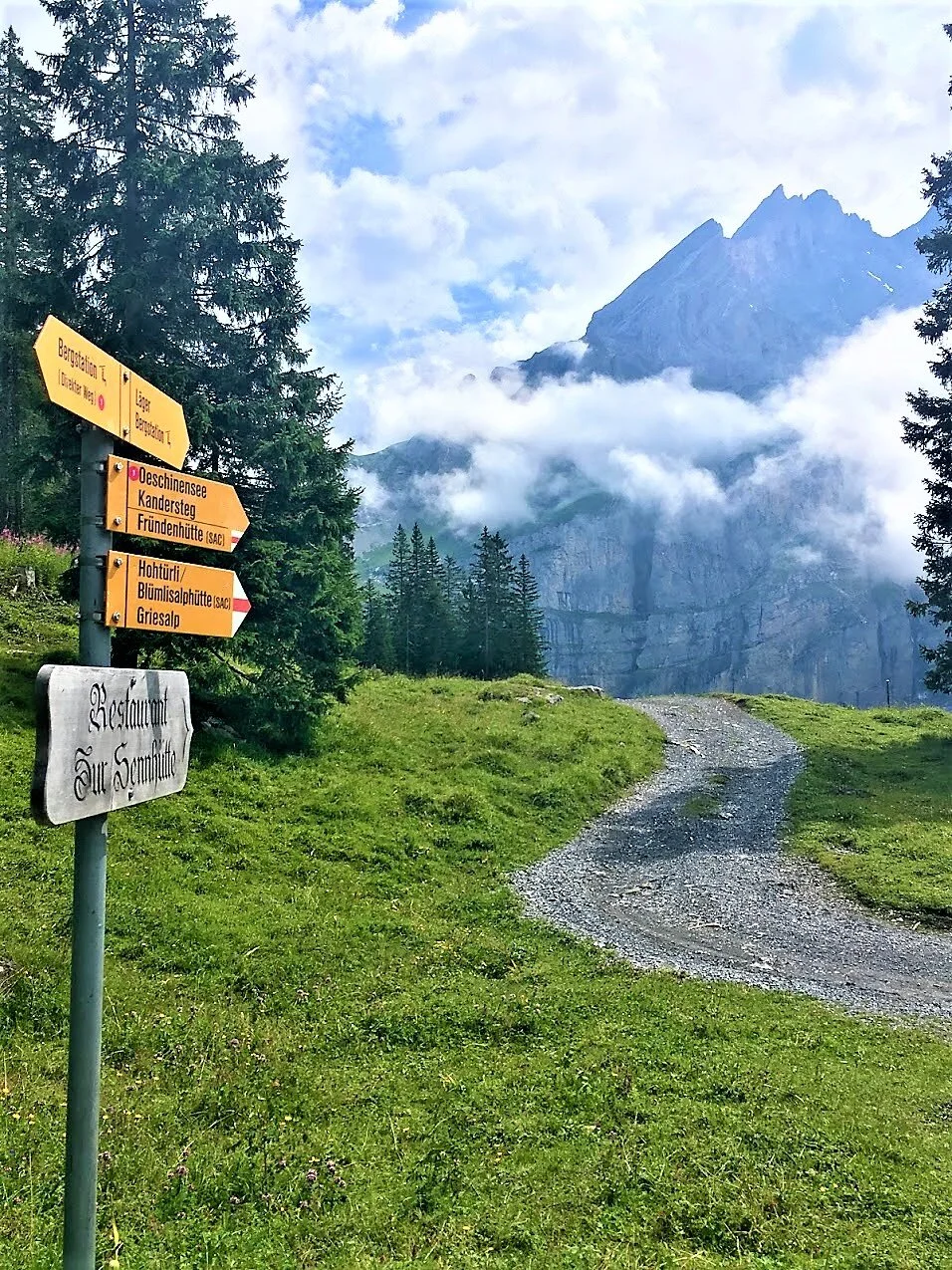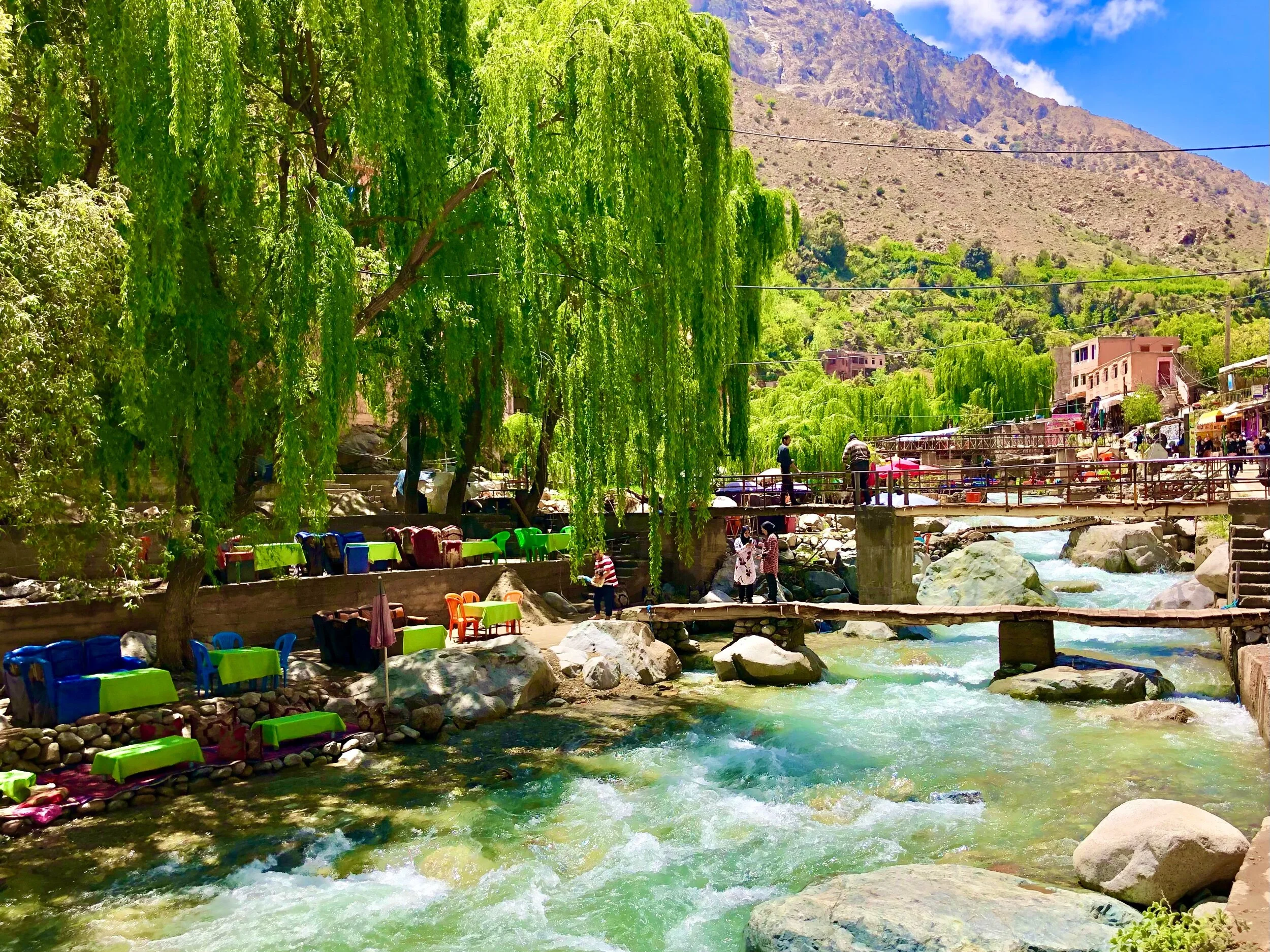Does the very thought of having to plan out an entire trip make you reconsider going at all?
We believe travel planning can be made simple - So we’ve created this guide for you!
A GUIDE TO TRAVEL PLANNING
2. Booking Your Reservations & Things to Consider
3. Travel Tech and Other Tips
4. Travel Documents & Medical Considerations
Choosing a Destination and Initial Plans
To start planning for your adventure, we recommend opening up a new Google Sheets or Microsoft Excel document to help keep all of the vital information that you collect organized and in one place - similar to the 90-Day Travel Itinerary that we provide in our Free Nomad Guide. In your case it will not have to be as elaborate as the one we provide. Additionally, if you add the costs for your flights, hotels, activities into the Sheets or Excel documents, they can automatically calculate the total costs for you! We also recommend using one specific email address for all of your travel reservations and communications to keep everything organized.
How to look for a destination that you can afford and enjoy:
Perhaps you saw a photo on Instagram or read a travel article somewhere and decided that you want to go to that specific destination. But how do you know if that destination that meets your particular interests and travel budget? Many travelers have found that once they arrived there was plenty to do, but nothing that really interested them or that it ended up costing much more than they expected. Turning a “good” trip into an “amazing” trip is the difference between knowing what you want to do and making sure that your destination will be suitable for your desires. There are great trips that could meet your interests for just about any budget, if you are open to considering a few places that you may never have heard about.
We can either start by looking at a particular destination and checking to see if the activities you enjoy doing are at that location, or we can search for a destination based on what you enjoy doing.
What do you like to do when you travel?
Are you traveling with other people? If so, consider what types of things all of you enjoy doing.
Decide on what your style of travel is and at what pace you feel comfortable traveling at. There are a number of different travel types, such as adventure, solo, tropical, historical, cultural, ethnic food, art, and more. If you aren’t sure, we recommend taking a look at Journy to help you think through that a little bit. Journy creates customized itineraries for people - but as a part of their free information gathering section, they ask a number of questions to decide how to build your custom itinerary to best suit your travel style. Around step 8 you will start being asked specific questions regarding what you enjoy doing. Don’t just answer these questions, take notes on what answers you choose! You can use this information to search for things by yourself - in the location you believe you want to travel to - or you can let Journy create the customized itineraries for you at a cost of $25 per day of your trip. If you are on a budget - and $25 per day for an itinerary sounds like a lot - you could choose to have them create a shorter itinerary for you (say for only a day or two of your trip) and then craft the rest yourself. You could also check out Condé Nast Traveler’s page “What Kind of Traveller are You?” for additional assistance.
If money is a concern - Select an appropriate destination!
If you are a serious budget traveler, consider one of the many choices below for your travels.
EUROPE: Ukraine, Bulgaria, Romania, Moldova, Poland, Hungary, Bosnia-Herzegovina, Montenegro, Serbia, Albania
AFRICA: Uganda, Tanzania, Kenya, Egypt
EURASIA/MIDDLE EAST: Azerbaijan, Armenia, Georgia
ASIA: Cambodia, Thailand, Vietnam, Laos, India, Sri Lanka, Nepal, Bangladesh, Philippines, South Korea, China (small cities)
OCEANIA: Bali (Indonesia), Malaysia
CENTRAL AMERICA: El Salvador, Honduras, Nicaragua, Guatemala, Haiti, The Caribbean
SOUTH AMERICA: Argentina
NORTH AMERICA: MexicoIf money matters a little bit, but you are not on a tight budget, you could consider some of these fairly cheap to mid-range countries as well.
EUROPE: Slovenia, Slovakia, Croatia, Portugal, Greece, Czechia, Spain, Iceland, Denmark, France (Saint-Chinian)
AFRICA: Morocco, Senegal, Namibia, South Africa, Mozambique
EURASIA/MIDDLE EAST: Uzbekistan, Turkey, Lebanon, Israel, Russia
ASIA: Taiwan, China (bigger cities)
OCEANIA: Fiji, Mo’orea, New Zealand, Australia
CENTRAL AMERICA: Dominican Republic, Cuba, Belize, Panama, Costa Rica, Curaçao
SOUTH AMERICA: Colombia, Bolivia, Ecuador, Uruguay, Paraguay, Venezuela, Peru, Chile
NORTH AMERICA: Canada (Vancouver and Montreal), USA (Moab: Utah, San Antonio: Texas, Kansas City: Missouri)If money is not really a concern, feel free to visit any country - even if we haven’t mentioned it!
How long is this trip going to be?
How much your trip costs depends greatly on how long the trip is going to be. “How much does it cost to go to Bangkok for 14 days” is a question that we can work with.
The longer that you want your trip to be, the farther you can travel and the more expensive it is going to become. Thus, if your budget is an issue, you might want to stick with shorter trips that are closer to where you currently live. Alternatively, you could stretch your value by staying for an exceptionally long time in a particular spot because a single 4-week trip to anywhere is ultimately cheaper than four 1-week trips to the same place, simply because you don’t have to purchase 4 round-trip tickets!
When do you want to go? There are 3 travel seasons – high, low and shoulder season. The times of these seasons correspond with the country you are going to, not just with the time of the year. High season is usually the summer season for that country. It is also the time that most tourists visit and when prices are highest. Low season is typically the opposite, but keep in mind that winter in countries around the equator are still quite warm! Shoulder season is the period in between High and Low seasons with a moderate amount of tourists and moderate prices. You can do a simple Google search for “best time of year to travel to Egypt” and it will tell you the best months to travel to that location. Additionally, you can check average temperatures for your destination by doing another Google search for “Average Temperature in Egypt in October”.
2. Finding the best last-minute deals:
Occasionally, you find time to travel at the last possible moment. It turns out that there are deals for situations just like that, so it might be worth taking a look to see if something that is on sale right now will peak your interest.
Best Last Minute Flights: CheapOAir and Skyscanner
Best Last Minute Hotels: Booking.com and Airbnb
Best Last Minute Tours & Activities: TourRadar, Isango!, and TravelZoo
Best Last Minute Cruises: TourRadar - Up to 50% off Cruise & Sailing Tours
Best Last Minute Cars: CheapOAir, Sixt, and Car Rental 8
3. Searching for great do-it-yourself itineraries:
Take advantage of our blog and search bar to look for an itinerary for the place you want to travel to. Keep in mind that these itineraries are not specifically designed for you, but they won’t cost you anything to check out! Additionally, if you see some things on the itinerary that you don’t think that you would enjoy, you could always replace them with other activities. If you don’t see an itinerary on our site for where you want to go, please let us know so that we can add it to the site. Thanks!
Additionally, you could search some of the major tour operator’s websites to see what their itineraries consist of - which is typically the favorites of the majority of travelers. This will not only give you a good idea on what might be worth seeing or doing around the area, but it might just make it easier for you to craft your own unique itinerary. Some of the more premium ones to check out are Adventures by Disney and G-Adventures. We did this exact same thing by combining two different tours that were offered by a major carrier in Scotland to make our own custom itinerary for much cheaper than their tours were. We tried to do the same thing using TourRadar in Egypt, but it turned out that it was cheaper to go with their tour instead of doing it on our own! You just never know.
If you are looking to save some money, one of the easiest things to do is to search for “free things to do in [destination]” on Google. Generally, a few lists will come up that tell you all about what things you could do for free while you are there. This list will help you balance the expensive activities with the free activities to keep your overall entertainment lifestyle costs reasonable. You could also try searching for “cheap things to do in [destination]” and open up a couple of those lists.
Booking Your Reservations & Things to Consider
1. Opting for Group Tours
The easy way to plan is to book tours. Group tours usually include transportation, accommodations, entertainment, and even some food. That is why this option appeals to so many people who find travel planning to be a royal pain. Making sure that your group tours aren’t going to double your costs is a difficult task because it then requires you to do all of the research that you would have done if you wanted to plan it yourself - so, it almost defeats the purpose of checking. You generally decide that the price is reasonable or not and then book so that the process is simple.
Well, we have your back! We’ve looked up a number of group tours and did the research ourselves. There are some that we absolutely know charge a premium over the others. However, most of these ones give you a much higher standard of pampering and care, and they pride themselves on delivering on your expectations. It is a comfort decision that needs to be made. If these are the types of tours that you are looking for, then we highly recommend G-Adventures for the best experience. You’ll even get to filter through their tours on what type of travel-style you enjoy most, including: Classic Tours, Active Tours, Wellness Tours, Local Living Tours, and even National Geographic Journeys!
Alternatively, there are a few other tour companies that leave us wondering just how they are making any money at all - because the self-guided versions that we put together end up costing only about 10% less than theirs and yet they do everything for us and even throw in a few other things that we didn’t factor in for seemingly no additional cost. So, it turns out that these tours are occasionally even cheaper than doing it ourselves and a lot less of a burden to figure out! If these are the type of tours that you are looking for, we highly recommend TourRadar or Isango!. Our most recent booking with TourRadar was their Explore Egypt tour which was wonderful and we would recommend going on!
2. Consider an “All-Inclusive” Resort or Cruise
Certain resorts, such as the Sandals & Beach Resorts located in the Bahamas and the Caribbean, offer “all-inclusive” package deals where you pay one price and everything that you need is provided to you. You get luxury suites, 5-star gourmet dining, unlimited premium spirits, scuba diving, unlimited land activities, state of the art fitness centers, golf course green-fees included, offshore island retreats, captivating pools, entertainment & live shows, tips are included, lounges, WiFi, transfers, and even your wedding is free when you book a honeymoon for 3+ nights! These type of places go on sale a few times a year and you can get Sandals & Beach Resorts for 65% off of their regular prices - so, it makes sense to keep an eye on them if you don’t want to have to plan everything out! If you’re looking for other all inclusive resorts around the world, we suggest checking out Booking.com’s Resorts page.
Another “all-inclusive” option would be to take a cruise. Meals, entertainment, and activities are included and you can visit various ports of call depending on the ship’s itinerary. There are usually optional tours and adventures available for booking at additional fees, and you can increase or decrease your costs based upon the type of room you book. If you book through a travel agent, they should be able to also get you onboard credits. Alternatively, using bookingbuddy.com allows you to compare prices and usually includes onboard credits and sometimes discounts on excursion fees. Coming from the UK? TUI cruise packages sometimes include airfare, and they all include tips and service charges. If you end up enjoying your cruise so much you can’t wait to do another one–you may want to book your next cruise while still on the ship. There are usually significant discounts on your next voyage if you book while still on board.
3. Pay attention to transportation/logistics costs
If you prefer to skip the tours and resorts, you will need to put together a travel plan by yourself. One of the first things to consider - even before considering what place you would like to stay at - is how you will be able to get around. We have found this to be more important because of mistakes we have made in the past. For example, we opted for a hotel that was $25 cheaper for a one-night stay in Rome to save a little money. We thought that was a good deal until it turned out that the 40 minute Uber to get to get there was over $75, each way! We could have searched for a different way to get to where we needed to go - like the Metro (which would have cost less than $12), but - because we couldn’t log into a local WiFi without confirming our email and also didn’t have a cellular data plan yet to confirm the email - we ended up having to take the Uber as we were limited on time. We were quite distraught, as you can imagine!
We have learned that in some countries the Ubers and Taxis are quite cheap, like in Egypt, while other countries, like Italy and France, are quite expensive! The Metro subways and buses seem to be fairly affordable, trains seem to be rather pricey, and cars are relatively cheap if you know how to rent them.
4. Booking transportation, hotel, car, and activities
Before you book your hotel or other accommodation, make sure you check on how much it is going to cost you to travel to that hotel and then to each of the places you plan to travel to while you are there. If everything seems acceptable, book the hotel and the transportation at the same time. This is why sites like hotels.com have “Package” deals with flights.
Alternatively, you can look for great airfare deals to book separately (we flew from the USA to Paris for $210 including food, bags, and seat choices). Interested in how we did this? Open up norwegianair.com and use their search system. This one is a bit different. Just under the main title screen that says “Destinations” in bold, you will see “Prices are from [Chicago] for [both direct and transit] flights in [USD] and include taxes and charges”. You will have to select one of their starting locations - and you may alter the other settings as well. The list below will show every location that they fly to, and the lowest cost for those flights in each month. Keeping your travel dates flexible is a great way to save a lot of money.
Our tips when it comes to renting cars: 1. Make sure you use a credit card that has auto insurance coverage to rent your vehicle (some countries require a formal letter from the credit card company), 2. Make sure you have enough money for a security deposit on the vehicle (if not, ask your credit card company for an extension for this type of hold), 3. Opt to rent a manual “stick-shift” vehicle if you know how to drive them (they are usually cheaper by about $10 per day!), 4. Make sure you fill the tank up before you return the vehicle (we paid $85 for less than 10 gallons of gasoline once because we forgot), and 5. Pay attention to gasoline prices in the location that you are visiting.
We also recommend that you book your activities well in advance. We had thought that we would visit the top of the Eiffel Tower in Paris, but this was completely booked up over two months in advance. The same situation occurred when we wanted to visit Warner Bros Studios outside of London, England. Unfortunately, if you don’t book ahead of time, you may not end up getting to go. A great place to search for an book activities is Isango! - we’ve found their prices to be reasonable and their website to be easy to navigate.
5. Searching for places to eat & drink
Regardless of where we go, we have been able to find a few affordable meals. In some places, this is just about everywhere we go, but in others we really need to do the research to find them. It is good to do a Google search on “how much does a meal cost in [your destination]”. The costs in your home country may be quite different than the costs in your destination location. This search will at least give you a decent idea of what to expect when you get there.
You can also do a Google search for “Cheap places to eat in [your destination]”. We typically skip the TripAdvisor links at this point and look for local links (that appear to be from your destination location) or ones from Culture Trip or Lonely Planet. Unfortunately, our experience with TripAdvisor is that they always pop up near the top of the search results with headlines that seem like they would be helpful, but then once we click on the link they end up giving us something completely different with reviews that have turned out to be less honest than the other ones we mentioned - so you might end up with a more expensive meal at a lower quality than you were expecting.
Consider the exchange rate for between your country and the one you are visiting. That exchange rate may end up costing you more than you think (or, depending on the country, saving you quite a bit!).
Travel Tech and Other Tips
1. Travel Rewards Credit Cards & ATM Cards with no foreign transaction fees or ATM fees
If you are a credit card user and you are planning to travel abroad, make sure your cards have no-foreign transaction fees. Many cards charge 1-3% foreign transaction fees. While the fees may only be a small percentage, over the long run those fees add up and there’s no reason to pay them when there are credit cards available with ZERO transaction fees. You many even be able to take advantage of generous sign-up bonuses and use points earned to offset costs during your trip, or save them and use the points to plan for another trip. Our Chase Sapphire Reserve card has no-foreign transaction fees and we signed up during the 100,000 point bonus period which has helped pay for many hotel stays, flights, and car rentals.
On a similar note, also check your ATM cards to make sure you won’t have any ATM fees while traveling. Many banks will charge a percentage of your withdrawal amount, but some will charge a standard fee PLUS a percentage of your withdrawal. Don’t give the banks your hard-earned money, get a no-ATM-fee card instead. Some debit cards even have no-foreign transaction fees as well, but we like to use our no-foreign transaction credit cards instead to earn points. We have an Aspiration account that reimburses any out-of-network ATM fees at the end of the month. Any in-network ATMs will automatically not have a fee. Other banks such as CapitalOne and Charles Schwab also offer no-fee cards.
Whether you use your no-foreign transaction fee credit card or debit card for your purchases, make sure you are charged in the local currency. If you choose to be charged in your home currency using the dynamic currency conversion, you’re basically guaranteed a terrible conversion rate. Even if you end up not getting a no-foreign transaction fee card, it’s usually a better deal to be charged in the local currency because you’ll be charged the foreign transaction fee either way. At least you’ll get a better conversion rate if you choose the local currency.
*Please don’t sign up for credit cards if you don’t pay the full balance every month. The interest rates on credit cards completely eliminate any benefit from travel rewards or included perks.
2. Phone Apps
There are so many apps available that it is hard to know which ones to use. Here are the ones we recommend that you download to make your travels and your travel planning easier and simpler.
Skyscanner – We usually start our flight planning by comparing prices on skyscanner. TIP: search for your flights in the app, and then use a private browser either on your phone or desktop and check the same routes on skyscanner.net. Using the private browser may decrease the prices.
booking.com – Do you need a place to stay on your trip? You can search for hotels on booking.com - but you can also search for apartments, bed and breakfasts, and hostels. It’s easy to set up filters for your budget, any required amenities, and even sort by price or ratings.
Google Maps – You can use the maps app to help plan out your itinerary by plotting out where you want to go and finding out how long it takes to get between each point. TIP: use their offline maps feature to download maps for your trip location so you can still use the app when you don’t have WiFi or when the cell service is spotty.
LoungeBuddy – If you have a credit card that also includes airport lounge access, make sure you take advantage of it! PriorityPass also has their own app, but loungebuddy includes user reviews which can be helpful in telling which lounges have the best food, WiFi, comfy couches, and showers. Don’t have a membership? You can also purchase day passes through the app.
WhatsApp – You might already have this app to keep in touch with friends, but it seems to be a very popular app in our travels so far. We’ve made friends with people sitting next to us on flights who have kept in touch through WhatsApp, and some of the tour companies we have used also have WhatsApp contact numbers.
Local apps – Do a search for the apps that are used in your destination. When we went to Greece, we found out that Uber was not available, but they did have a local taxi app that worked just like Uber. In Salzburg, Austria they had a local app for transportation that was more accurate than Google Maps with bus and train times. In Cairo, Egypt food delivery was available through the Otlob app instead of UberEats or Postmates.
3. Smartphones and staying connected
Most of us are tied to our smartphones 24/7 and rely on them for many things during travel from boarding passes to GPS to taking photos and uploading them to social media. If you are traveling abroad, the simplest way to use data on your phone would be to pay for international roaming, if available. International roaming is different from international plans (without the roaming). Make sure you pick the one with roaming if you are going to use it, because a decent amount of travelers have been caught off guard after buying international plans and then finding out that all those plans do is allow you to call other countries from your home country - they don’t allow you to make calls from a different country! Even if you get an international roaming, check the rates because it might end up being very expensive. Other options would be to get a local SIM when you arrive at your destination or you could get a universal SIM card. To use the SIM cards like this you will need to make sure that your phone is unlocked and has a removable SIM card.
You can also look into renting a cell phone at your destination or renting a WiFi hotspot device to stay connected. We’ve found that you can also use your smartphone as a hotspot to give access to other devices (but it will drain your battery quickly). The cheapest option would be to just rely on WiFi locations that you find as you travel. Most hotels and other accommodations provide complimentary WiFi, but definitely check to make sure. We’ve found that many, but not all, airports have free WiFi – some require you to sign up with an email or Facebook, others just allow you access by clicking the logon button. Some cafes, restaurants, and bars will have unlocked networks that you can access, or they will have the password on signs or on their menus. In Japan, even vending machines are known to have free WiFi available.
Travel Documents & Medical Considerations
Way to go! You’ve chosen a destination, booked your transportation and accommodation, scheduled your itinerary, and are counting down the days until your upcoming adventure. Now let’s make sure you have all your important documents and paperwork in order to make your trip go as smoothly as possible.
1. Passport & Visa(s)
Traveling internationally? If you haven’t already applied for your passport, you should apply as soon as possible. Processing times for passports can vary and they can also end up getting lost in the mail, as we have experienced. It’s a lot less stressful if you have your passport ready a few months before you have to travel than expecting to receive it a few days before you leave.
If you already have a passport, check the expiration date. As a general rule you’ll want to make sure your passport is valid for at least 6 months beyond the last day of your trip. Also make sure you have enough empty pages for stamps/visas.
Some countries allow you to receive tourist visas upon arrival and may or may not have a fee. Other countries will require you apply for and receive a visa in your home country or at an embassy and will not allow you into the country if you haven’t already received the visa ahead of time. If you’re not sure if you need a visa before arrival, don’t know how to go about applying for one, or just have questions (and you’re from the US), we used PassportHealth to help us sort out what was needed. We also used them for Immunizations & Medications!
2. Immunizations & Medications
Start with notifying your doctor of your upcoming travel plans as they may be knowledgeable about any immunizations or vaccinations that you will need. However, certain shots are only normally available at travel clinics. While planning our trip to countries in central Africa and South Africa, we needed to get a yellow fever vaccination. We had read that other travelers have been able to get the shot from their doctor or even their local Walgreens, but there was a limited supply available at the time of our planning and our doctors were unable to acquire any for us. We contacted PassportHealth because they are a dedicated Travel Clinic, and they provided us with the yellow fever vaccination as well as detailed information about each country we were planning to visit.
3. Travel, Medical, and Health Insurance
First check to see what insurance your credit cards offer. If you purchase your flights, hotel, or car rental through a credit card, they may offer some type of travel insurance or coverage. Just make sure to keep track of the requirements. There may be stipulations on whether you used the card to purchase in-full or in-part, or how many days you will be traveling. Take the time to read the fine-print and it could save you from having to purchase additional insurance.
We do also recommend purchasing travel insurance for your trip for things not covered by your credit card or if you need additional coverage. Don’t just purchase insurance by going with what’s popular. Figure out what you need coverage for and then do your research. World Nomads is often recommended by travel bloggers and they may be a good choice, but for us they were a bit pricey and provided insurance for things we didn’t need. Maybe that will change in the future, but we ended up getting travel insurance through Berkshire Hathaway and have been happy with the coverage and service they have provided so far. Check out our Travel Insurance Research to see why that made sense to us at the time.
While we found the value in the policy that we chose with Berkshire Hathaway combined with the coverage provided by our credit cards, we also must note that Travel Insurance is not the same as Medical Insurance - and it typically does not include any at all. Most will offer some type of Emergency Accident & Sickness Medical Expense, but do make sure that you check to see what qualifies for that coverage. If you don’t want to take that risk, we recommend considering Seven Corners Insurance - which offers an International Health Insurance plan. This is the company that we are currently considering switching to shortly before our first child is born. If you may have healthcare needs, make sure you search for and select their “International Health Insurance” plans, not just their “Travel Insurance” plans.
We have learned the hard way that getting pregnant without medical coverage could be costly. Luckily, we have found a great place in South Africa to give birth that we could afford without regular Health and Medical Insurance. Our Berkshire Hathaway Travel Insurance policy will cover us under the Emergency Accident & Sickness Medical Expense, but only for unexpected complications during childbirth. This means that we have to pay for the regular maternity, delivery, and hospital costs associated with a regular delivery entirely out of pocket, but we would be covered for costs involved with unexpected complications. While our situation worked out, we are still concerned about our allowable travel visa stay in South Africa and whether we will end up receiving our child’s Passport from the U.S. Embassy in time before we are required to leave the country. We recommend avoiding this situation by checking out the companies we mentioned above.
During our research we found a few different countries that might be suitable to give birth at while you are traveling overseas - based on data we collected concerning maternal & infant mortality rates, and regular vs. C-section delivery cost ranges in both private and state hospitals. Please contact us if you find yourself in this situation and we will share this information with you (for free).
4. Copies of Important Documents
Bringing hard copies of important documents is extremely helpful in case you are not able to access the internet or a printer. However, it can add unwanted weight to your carry-on/luggage so you may just want to bring electronic copies. Please decide what is best for you. You can take photos or use a scanner app to have copies on your smartphone. You may also want to leave copies with a trusted family member or friend back home so they can send them to you - just in case your situation requires originals.
Here is a list of important documents that you will want to make copies of to help you out:
Passport
Visa
Flight tickets
Itinerary
Room/Hotel/BnB reservations
Rental car reservations
Tour bookings
Drivers license/International Drivers License*
Credit Cards
Travel Insurance cards
Medical & Health Insurance cards
Birth Certificate for your child**
*We had read online that we would need an International Drivers License for our car rentals. But none of the companies we rented from in Europe and the UK asked to see it. I’m not sure if we were exceptions but in our experience as Americans, it was not needed in the EU.
**If you are traveling with children to South Africa, you’ll need to bring the original or a certified copy of your child’s birth certificate. See details here. Also, some airlines may require proof of age if your child is traveling as a lap child.
5. Notify your bank(s)
Do you remember all of those reward credit cards you signed up for? You will want to notify the financial institutions associated with each card about your travel itinerary. Be sure to include layover cities and countries as well. You don’t want your card to be suspended or declined because you tried to use it during your 4-hour layover in Iceland on your way to Switzerland, like what happened to us. If you are bringing any debit cards make sure to also notify those banks. Most banks will allow you to notify them simply by logging into your online account and sending them a secure message. Some even have dedicated travel notification sections. You could also notify them by calling the number on the back of your card.

























